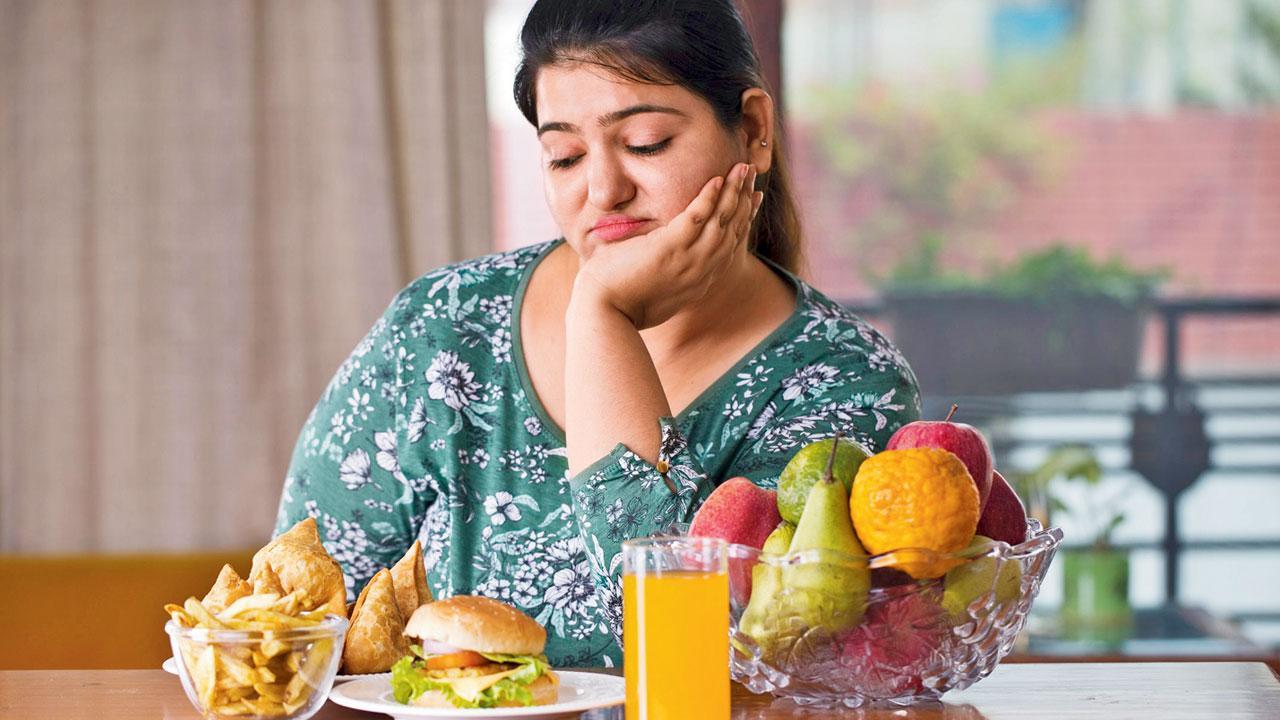We don’t spend as much time checking on ingredients as we should, and the consequences will eventually be devastating

According to World Health Organisation estimates, India now has the third-largest obese population. Representation Pic
 Something interesting happened in Colombia a couple of weeks ago, when that country’s Congress voted to impose taxes on ultra-processed foods and sugary drinks. They did this to curb obesity and address other health issues, and their targets were foods with high added sugars, salt, and saturated fats. It was a pretty long list that included cereals, jellies, jams, purees, sauces, condiments and seasoning. Apparently, these items will face a 10 per cent tax this year, followed by a 15 per cent tax in 2024, and 20 per cent in 2025. One of the reasons for this was research that showed three-quarters of children and young people drank at least one sugary drink every day, while 22.4 per cent of women in the country were overweight or obese because of unhealthy eating.
Something interesting happened in Colombia a couple of weeks ago, when that country’s Congress voted to impose taxes on ultra-processed foods and sugary drinks. They did this to curb obesity and address other health issues, and their targets were foods with high added sugars, salt, and saturated fats. It was a pretty long list that included cereals, jellies, jams, purees, sauces, condiments and seasoning. Apparently, these items will face a 10 per cent tax this year, followed by a 15 per cent tax in 2024, and 20 per cent in 2025. One of the reasons for this was research that showed three-quarters of children and young people drank at least one sugary drink every day, while 22.4 per cent of women in the country were overweight or obese because of unhealthy eating.
There are all kinds of reasons touted when people choose to support fast food, from convenience to affordability, and these reasons make a lot of sense in poor countries. When I thought about India, however, I realised how little attention we pay to what we consume, and how we have allowed it to happen for so long that this lack of information is more the norm than an exception.
Health violations proliferate all around us, but we have long been inured to them. Think about the water and oil used at stalls outside every railway station, for instance, or the appalling standards of hygiene at restaurants across India. Think about the last time you saw an eatery being forced to shut because of any violation, and how easy it is for so-called health and safety officers to look the other way when something that shouldn’t be served is done so with impunity.
Someone always pays a price for this, of course, and it is only a short-sighted government—or one that isn’t even remotely interested in the well-being of the citizens it is meant to govern—that refuses to engage with this incredibly critical issue. According to a report in The Lancet published earlier this year, the National Family Health Survey (NFHS), the largest demographic and health survey in India, conducted a study and found that abdominal obesity in the country was 40 per cent in women and 12 per cent in men. Apparently, five to six out of 10 women between the ages of 30 and 49 are abdominally obese. This is also on the rise in rural areas and is penetrating lower and middle socioeconomic sections of society. Going by World Health Organisation estimates, India now has the third-largest obese population in the world after America and China. Why is it, then, that this doesn’t get as much attention as it ought to?
One reason is politicians who refuse to acknowledge that problems related to food exist at all. Some, armed with no qualifications at all, say India has no serious levels of hunger, contrary to what the Global Hunger Index 2023 clearly states. Pakistan, Bangladesh, Nepal and Sri Lanka have all fared better in the index, which our politicians can’t stomach.
An easy way to recognise how lax we are when it comes to standards is to look at medicines. It’s easy to argue that if the healthcare industry can get away with murder (literally), how are we expected to monitor regular food items? There were 70 child deaths in Gambia this year and their injuries were linked by global health officials to cough syrups made in India. Pharmaceutical experts have reportedly warned for years about lax oversight of drugs made in India, whose industry supplies nearly half of the generic medicines used in Africa. Our health regulator says it found no fault with the medicines.
This isn’t the only example either. Scratch the surface of the ayurvedic industry and a whole lot of skeletons tumble out. There are rampant violations that no one wants to pay attention to, and if something so critical can get away with limited oversight, we should all be petrified about everything else we are encouraged to consume with abandon. Is the honey we buy real honey? What is in those instant noodles? Where are the chips sold at local kirana stores prepared? What about Chinese food stalls, pani puri vendors and vada pav outlets?
We know nothing will be done. We will eat what we want to, millions of us will die prematurely, and ‘foodies’ will continue creating content about ‘The Best Pav Bhaji in Dadar’ on TikTok. Columbia has finally decided that the health of its people is too important to ignore. I hope India feels that way too, someday.
When he isn’t ranting about all things Mumbai, Lindsay Pereira can be almost sweet. He tweets @lindsaypereira
Send your feedback to mailbag@mid-day.com
The views expressed in this column are the individual’s and don’t represent those of the paper.
 Subscribe today by clicking the link and stay updated with the latest news!" Click here!
Subscribe today by clicking the link and stay updated with the latest news!" Click here!










